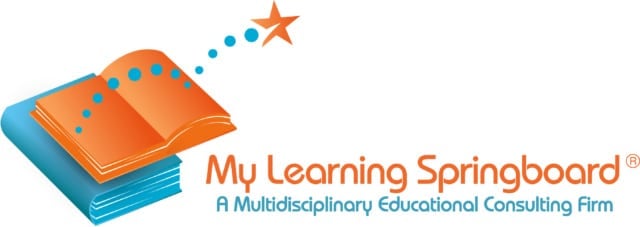
Some of the most successful and commonly used programs to support struggling readers and students with language-based learning disabilities are Orton-Gillingham, Preventing Academic Failure, Wilson Fundations, and Lindamood-Bell. Orton-Gillingham was the first program developed for 1:1 reading intervention in the 1930s by Dr. Samuel Orton and Dr. Anna Gillingham. Preventing Academic Failure and Wilson are both based on the Orton-Gillingham sequence. Lindamood-Bell is not.
Orton-Gillingham
Orton-Gillingham is known for being direct and explicit, multi-sensory, and systematic in its approach to reading intervention and building phonemic awareness, developing advanced phonological understandings, and integrating word study and vocabulary development. Orton-Gillingham can be used with students of any age, and it is recommended to be delivered in a 1:1 or small group setting. The OG lessons are very structured, sequential, and cumulative, always building upon past lessons to review and reinforce previously learned skills and concepts. The lessons are also diagnostic and prescriptive, allowing them to be very individualized based on the successes and errors of the learner. Through multi-sensory techniques and repetition, students overlearn new skills and concepts to build automaticity and confidence.
Preventing Academic Failure
Preventing Academic Failure, or PAF, is an Orton-Gillingham based reading intervention program designed for whole group instruction. It was developed by Phyllis Bertin and Eileen Perlman at The Windward School, which has locations in White Plains and Manhattan. Although it is often used with a whole group in the classroom, PAF can also be modified for use in a one-on-one or small group setting. Preventing Academic Failure is most typically used with students in grades K-3, but that’s only if early intervention has been put in place; often students aren’t identified for targeted intervention until grade 3, 4 or 5, which is terribly unfortunate and unnecessary.
Because it’s based on the Orton-Gillingham program, PAF also uses a multi-sensory approach, but it’s significantly differentiated from a traditional OG approach in that it systematically integrates phonics instruction, spelling, handwriting, and reading comprehension. Skywriting is one multi-sensory activity that PAF focuses on to support students’ spelling needs. By using gross motor movements to form the letters while spelling words aloud, the children are more actively engaged in the process using verbal, visual and kinesthetic modalities.
During each PAF lesson, when a new sound or rule is taught, dictation is used to practice spelling words or sentences including words that focus only on that new rule. This dictation exercise allows students to not only practice their new spelling rule, but to work on their handwriting skills as well. As students develop stronger spelling and decoding skills, students can then improve their reading comprehension skills through PAF’s carefully scaffolded texts.
The program believes that “only when reading is accurate and fluent can students then develop meaning.” At the end of each lesson, students read stories in Merrill Readers to reinforce decoding words with the sounds they have just learned, as well as to develop and strengthen their reading comprehension skills.
For writer’s workshop, PAF is complemented by Judith Hochman’s Teaching Basic Writing Skills.
Click to visit The Windward Teacher Training Institute site.
Wilson
The phonetic sequence in Wilson is also aligned with the principles of Orton-Gillingham, and it offers a variety of programs for different ages and learners, including: Fundations, Just Words, and the Wilson Reading System.
The Wilson programs are designed to fit within the tiers, or levels, of the Response to Intervention (RTI) framework. All three programs support students with learning and language-based disabilities through multi-sensory instruction and differentiated pathways, but these programs aren’t as fully integrated as PAF with regard to scaffolded texts mapped to each lesson.
Fundations is used for prevention and early intervention for grades K-3 and focuses on phonics, phonemic awareness, fluency, and sight words. Just Words is typically used for intervention in grades 4-12 for students who need greater support with decoding and spelling skills. The Wilson Reading System is a more intensive program for learners in grades 2-12. This program focuses on teaching the structure of the English language to students with language-based disabilities, such as dyslexia, who have severe language deficits and are not making progress with their standard classroom curriculum.
Lindamood-Bell
Lindamood-Bell is comprised of five reading programs and one math program for students with dyslexia and other language-based learning challenges as well as students with general learning challenges or autism. These five programs include: Seeing Stars, Visualizing and Verbalizing, Talkies, LiPS, On Cloud Nine Math.
Lindamood-Bell’s reading programs are not based on Orton-Gillingham principles but rather focus on the sensory-cognitive functions that support reading, including symbol imagery and concept imagery, both of which involve creating mental pictures. Instruction is typically implemented 1:1 but can be adapted for small groups or classroom settings.
Though not an exhaustive list by any means, Orton-Gillingham, PAF, Wilson, and Lindamood-Bell are especially popular programs to support struggling readers, and there are components from each program that would benefit ALL learners. While many practitioners discuss or recommend programs with a purist approach in mind, we recommend not fixating on a single approach because it’s not entirely that simple, particularly when instruction is being delivered at home in a 1:1 setting.
Each learner is different and reading intervention needs to be targeted to meet specific needs at specific times. Motivating and engaging each learner must be carefully factored in as well. In our experience, it’s best to coordinate support between home and school with skillful teachers, experienced in a variety of programs and intervention techniques, making professional judgments based on a palette of instructional approaches and strategies rather than rigidly following a scripted curriculum. That said, these judgments should be based on evidence-based research, and we prefer a systematic, multisensory, content-driven approach that follows an Orton-Gillingham sequence.
If you suspect your child has a reading challenge, don’t wait to organize targeted support. Engage your child’s classroom teacher in conversation and seek the school’s input, but don’t ignore your parental hunch. There are a variety of classroom assessments that can help to determine current levels of performance and needs. These are different from formal assessments used by psychologists to make diagnoses as part of a comprehensive evaluation.
It’s a lot for parents to consider, which is exactly why we partner with parents so closely. Our leadership team can help you figure out the right next steps taking longer term school planning into consideration, curate a program for your child, and then organize in-home support while also collaborating with your child’s school team and/or related service professionals as appropriate. Please contact our office to discuss your child’s reading and writing needs.
By Brad Hoffman, Curriculum & Instruction Specialist, Nicole DeMartino, Special Educator, and Laurie Gross, Reading Specialist

